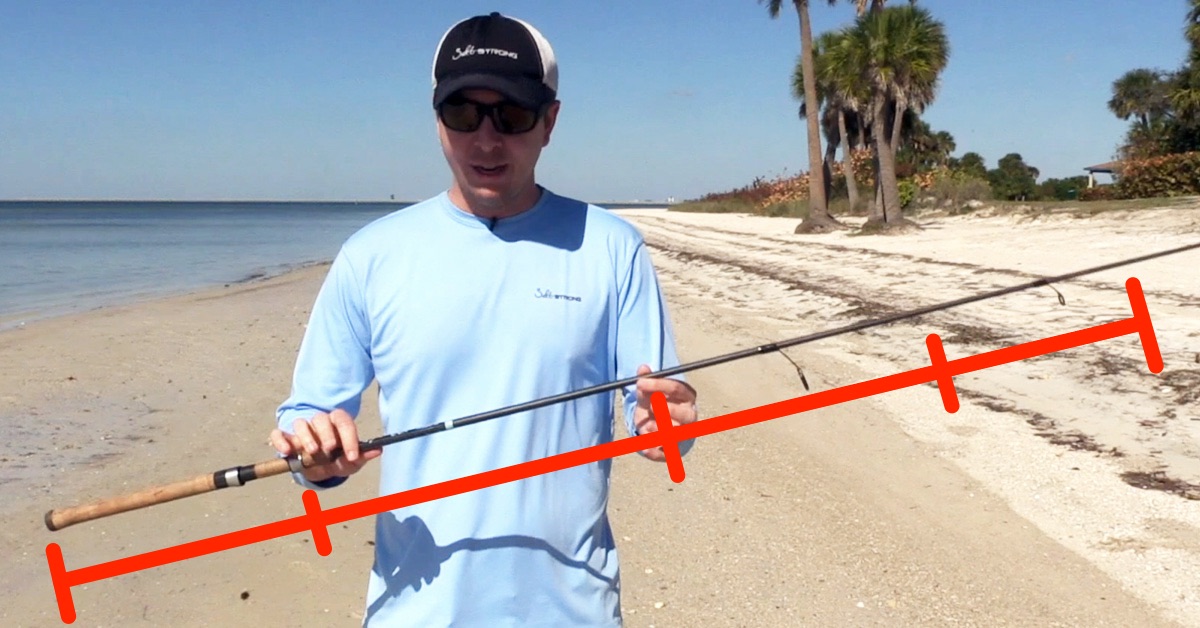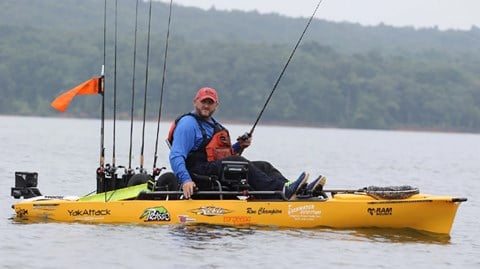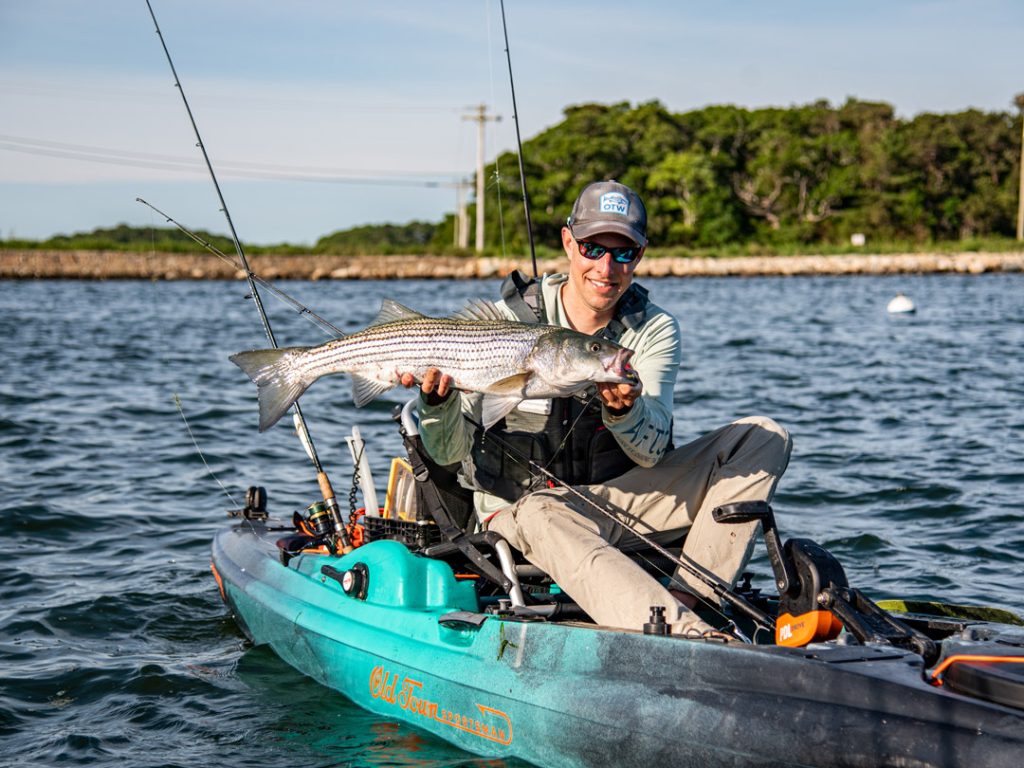To determine the right size kayak for fishing, consider your height, weight, and storage needs. The kayak’s length generally ranges from 10 to 14 feet for optimal stability and maneuverability.
Selecting the appropriate fishing kayak can greatly enhance your angling experience. The right size kayak ensures comfort, stability, and efficient use of space for gear and catches. Key factors influencing kayak size include the angler’s body size, the type of water being fished, and personal preferences for kayak features.
Stability and tracking are crucial for a successful fishing trip, and they are directly influenced by the kayak’s length and width. Shorter kayaks offer better maneuverability in tight spots, while longer models provide smoother tracking in open water. A well-sized kayak enables anglers to focus on the thrill of the catch rather than the inconvenience of an ill-fitting vessel. With the correct kayak, fishing becomes more enjoyable, safer, and more productive.
Why Kayak Size Matters For Fishing
Choosing the right size kayak is crucial for fishing success. It affects comfort, stability, and how well you can move on the water. Bigger isn’t always better, and smaller isn’t always smarter. Let’s dive into why the size of your kayak plays a pivotal role in your angling adventures.
Impacts On Stability
Stability is key for fishing, especially when reeling in a big catch. Wider kayaks tend to be more stable, which is great for beginners. They allow for steady casting and retrieving, minimizing the risk of flipping. However, the material and hull design also influence stability. Here’s a quick breakdown:
- SOT Kayaks: Stand-On-Top (SOT) kayaks offer more deck space, making them stable for casting.
- Sit-In Kayaks: These can feel less stable but keep you drier and warmer.
- Flat Hulls: These are suitable for calm waters with maximum stability.
- Round Hulls: These offer good speed but can be less stable in still water.
- V-shaped hulls: These cut through water and waves for a stable ride in rough conditions.
Maneuverability Considerations
Maneuverability gets you to the best fishing spots. Shorter kayaks turn on a dime but may lack speed. Longer kayaks glide faster and track better, meaning they stay straight on course. Choose depending on the waters you frequent. Smaller rivers and creeks need agile kayaks; open waters need kayaks that track well. Here’s what to remember:
| Kayak Length | Turns Quickly | Tracks Well | Best for Water Type |
|---|---|---|---|
| Less than 10 feet | Yes | No | Small rivers, creeks |
| 10 to 12 feet | Good balance | Good balance | Versatile, various conditions |
| Over 12 feet | No | Yes | Open water, straight lines |
Weight capacity also matters. Your kayak should support your weight plus gear. It ensures safety and optimal performance. Check kayak specs before buying to match your needs.
Different Types Of Fishing Kayaks
Choosing the right size kayak for fishing starts with understanding the different types.
Fishing kayaks come in various shapes and sizes, catering to water types and fishing styles.
Sit-on-top Vs. Sit-inside
Sit-on-top kayaks are popular for fishing due to their stability and storage space. With an open deck, you can move easily and access gear. They’re excellent for warm climates and calm waters.
Sit-inside kayaks offer shelter from wind and water. They are good for cold weather and rough water. With a lower center of gravity, they provide better control and speed.
| Features | Sit-On-Top | Sit-Inside |
|---|---|---|
| Stability | High | Medium |
| Storage | Accessible | Limited |
| Mobility on Deck | Easy | Restricted |
| Weather Protection | Low | High |
| Water Type | Calm | Rough |
Specialized Fishing Kayaks
Specialized fishing kayaks are designed with anglers in mind. They feature rod holders, gear tracks, and mounting points for accessories.
- Pedal kayaks let you move hands-free.
- Inflatable kayaks are portable and easy to store.
- Tandem kayaks can fit two or more anglers.
Each type aims to enhance your fishing experience by focusing on performance and convenience.
Personal Size And Comfort
Choosing the right size kayak for fishing isn’t just about the kayak itself. A perfect fishing trip hinges on how comfortable you are while paddling and casting. Your personal size and how you fit into the kayak make all the difference. Let’s dive into how your body type correlates with the kayak’s size and why ergonomics should be a priority.
Correlating Kayak Size To Body Type
Body type influences kayak size choice. The right fit offers balance and control.
| Height | Weight | Kayak Length | Kayak Width |
|---|---|---|---|
| Short | Light | Shorter | Narrow |
| Average | Medium | Medium | Standard |
| Tall | Heavy | Longer | Wide |
Ergonomics And Sitting Position
Comfortable sitting means more enjoyable fishing. Your kayak must support a natural posture.
- Seat design – Provides lower back support.
- Legroom – Enough space to adjust and stretch.
- Footrests – Adjustable for a firm foothold.
Test different kayaks for fit. Consider seat padding and cockpit size.
Analyzing Water Conditions
Analyzing water conditions is essential before selecting the right size kayak for fishing. The water’s temperament shapes your kayak’s design needs. It influences stability, maneuverability, and overall comfort. The ideal kayak size ensures a safe and enjoyable fishing experience. Whether on a placid lake or facing the ocean’s swells, understanding water dynamics helps pinpoint the perfect kayak.
Calm Waters Vs. Challenging Waves
In calm waters, like serene lakes and slow-moving rivers, larger and wider kayaks flourish. With increased surface area, they offer stability for casting lines and reeling in fish.
- Wide beams resist tipping.
- Long hulls improve tracking.
Contrast this with challenging waves. Coastal fishing demands a kayak adept at cutting through the surf.
- Shorter kayaks maneuver well.
- Narrow hulls handle waves better.
Navigating Narrow Passages
Stream and river fishing involves navigating through tight spots. A kayak’s length dictates its ability to weave through such areas. Short to medium kayaks often win in agility here.
| Length | Maneuverability |
|---|---|
| <10 feet | High |
| 10-12 feet | Medium |
| >12 feet | Low |
Sharper turns and lightweight design help in these waterways. These features allow paddlers to skillfully navigate and maintain control while pursuing their catch.
Understanding Kayak Dimensions
Choosing the right kayak for fishing starts with understanding kayak dimensions. These sizes and shapes matter a lot. They decide how a kayak moves in the water. Each dimension gives a kayak its unique feel and stability. Let’s dive into how length and width play huge roles in your choice.
Length And Width Explained
| Dimension | Importance |
|---|---|
| Length | Longer kayaks go faster and are good for open water. |
| Width | Wider kayaks are more stable, and great for fishing. |
Kayaks come in many sizes. A shorter length is often between 8 to 13 feet. This size is good for small water areas. Longer kayaks can be 13 feet or more. They work best in bigger lakes or seas.
Width, or the beam, also matters. A kayak that is more than 30 inches wide is stable. This is good for fishing. A narrower kayak is less stable but it moves quicker.
How Dimensions Affect Performance
- Stability: Wider kayaks won’t tip over easily.
- Speed: Longer kayaks slice through water faster.
- Maneuverability: Shorter kayaks turn quickly.
- Tracking: Long kayaks stay straight on course.
For calm waters, a short, wide kayak is fine. You can turn and stop easily. In wild waters, choose a long and narrow kayak. This way, you’ll cut through waves better.

Credit: www.saltstrong.com
Load Capacity
Kayak’s load capacity is crucial for safe and comfortable fishing trips. It tells how much weight your kayak can handle. This includes you, your gear, and any fish you catch. Choose a kayak with the right load capacity to avoid sinking or tipping.
Weight Limits And Gear Storage
Every kayak has a maximum weight limit. This number is your key to a safe fishing experience.
- Check the kayak’s weight limit before buying.
- Remember to include your weight and all gear.
Storing your gear needs smart planning. Evenly distribute heavy items to maintain stability.
| Kayak Type | Weight Limit | Ideal for |
|---|---|---|
| Recreational Kayak | 250-300 lbs | Light gear, short trips |
| Touring Kayak | 350-400 lbs | More gear, longer trips |
| Fishing Kayak | 400-550 lbs | Ample gear, all-day comfort |
Balancing Equipment And Personal Weights
A good balance between personal and equipment weight ensures optimal performance. Here is how:
- Start with your own weight.
- Add the weight of your fishing tackle, coolers, and extras.
- Ensure the total weight is below the kayak’s limit.
Consistent checks keep you within limits. This helps avoid any last-minute offloading. It also keeps your kayak agile and efficient on the water.
Field Testing And Demos
Choosing the correct kayak size for fishing isn’t just about numbers and charts. Real-world testing in the water is crucial. This hands-on approach ensures the kayak fits your needs, style, and comfort. Dealers often offer demo days where you can test various models. Here’s why you should take advantage of these opportunities:
The Importance Of Test Paddling
Test paddling a kayak gives you the feel of its stability, maneuverability, and comfort. Look for these events at local dealers or outdoor expos. Test paddling can reveal much more than specs ever could. Take note of the kayak’s response to real water conditions. It’s the best way to gauge suitability for your fishing adventures.
What To Look For During A Test
When test paddling, focus on several key aspects:
- Stability: Does the kayak handle well in different water conditions?
- Comfort: Can you sit for long periods of time without discomfort?
- Control: Is the kayak responsive to your paddling techniques?
- Storage: Are you able to access your gear easily?
- Performance: Does it meet your expectations in terms of speed and agility?
Take notes or even record a video to remember your experiences with each kayak. A direct comparison after multiple tests helps in making an informed decision. Trust your instincts after these tests, as they often signal the best choice for your fishing excursions.

Credit: www.lowrance.com
Essential Accessories For Your Kayak
Before you set sail on your fishing adventure, consider the essential accessories for your kayak. Proper gear ensures a successful and enjoyable trip. Let’s dive into the must-have customizations and safety features for your kayak fishing journey.
Customizations For Fishing
- Rod Holders: Secure your fishing poles with adjustable rod holders for hands-free fishing.
- Anchor System: Keep your kayak steady with a compact, easy-to-deploy anchor.
- Tackle Box Attachments: Organize your bait and hooks with mounted tackle storage.
- Fish Finder Mount: Install a fish finder to locate your next big catch efficiently.
- Kayak Paddle Clip: Free up your hands by clipping your paddle to the kayak’s side.
- Gear Tracks: Add customizable tracks to attach additional accessories as needed.
Safety Gear And Convenience Features
| Item | Description |
|---|---|
| Personal Floatation Device (PFD) | Choose a comfortable, high-visibility life jacket for safety on the water. |
| Kayak Light | Ensure visibility during early morning or evening trips with a waterproof light. |
| Bilge Pump | Effortlessly remove water from your kayak’s hull with a manual or electric pump. |
| First Aid Kit | Be prepared for minor injuries with a waterproof kit stored onboard. |
| Waterproof Storage | Keep your valuables dry with a waterproof bag or case. |
| Signaling Whistle | Attract attention in emergencies with a loud, easy-to-use whistle. |
Ready your kayak with these accessories for a secure and productive day on the water. Your fishing excursions will be both rewarding and safe.
Making The Purchase
Finding the best fishing kayak involves more than just knowing the size. When you’re ready to buy, where you shop and what to consider are crucial. Below are guides to purchase your perfect kayak.
Where To Buy Your Kayak
Shopping for a kayak can be an exciting experience. Here’s how:
- Local sporting goods stores: See and touch various models.
- Outdoor specialty shops: Get expert advice from staff.
- Online retailers: Compare prices and options from home.
- Kayak-specific dealers: Find a wide selection of fishing kayaks.
- Outdoor expos or shows: Discover deals and the latest models.
Considerations For Second-hand Options
Buying used kayaks can save money. Keep these in mind:
- Check the kayak’s condition: Look for damage or repairs.
- Confirm it fits your size: Ensure comfort and a proper fit.
- Assess wear and tear: Understand its history and usage.
- Don’t compromise on price: safety and functionality come first.
- Test it if possible: A trial run will help make a decision.
Care And Maintenance
Fishing enthusiasts know that a well-maintained kayak ensures countless adventures on the water. Proper care and maintenance keep your kayak in top form. This guide provides essential tips for extending your kayak’s life and keeping it ready for your next fishing trip.
Extending The Life Of Your Kayak
- Store it properly: Keep your kayak out of direct sunlight when not in use. UV rays can damage the material.
- Use kayak covers: Invest in a good-quality cover to protect from dust and debris.
- Clean after use: Rinse with fresh water, especially after saltwater trips. Remove grime and dirt.
- Check for wear: Inspect the hull regularly for any signs of wear or damage.
- Avoid dragging: Carry your kayak to the water to prevent scratches and holes.
Routine Checks And Repairs
- Examine for damage: Look for cracks or dents. Attend to them immediately.
- Check hardware: Ensure handles, bungees, and footpegs are secure. Tighten anything that’s loose.
- Inspect the seat: Comfort is crucial. Ensure the seat is firm and properly attached.
- Maintain accessories: Rod holders, paddle clips, and other add-ons need regular checks.
- Repair kit: Keep a repair kit on hand for quick fixes while on the go.
Enhancing Your Fishing Experience
Choosing the perfect-sized kayak amplifies your fishing success and comfort. Let’s dive into techniques that maximize your experience on the water. Your fishing journey evolves with each paddle stroke in a kayak that fits.
Enhanced Techniques And Tips
Understanding your kayak’s size influences stability, control, and ease of fishing. Here are actionable techniques:
- Determine your kayak’s length and width: Shorter kayaks offer better maneuverability, which is vital for tight spots. Wider kayaks provide greater stability, which is crucial for casting and reeling in hefty catches.
- Test multiple seating positions: Adjust your seat for lower back support. An upright posture aids in powerful paddling and precise fishing.
- Opt for adjustable footrests: These ensure a snug fit, reducing fatigue and allowing for swift movements.
- Maximize storage: Kayaks with ample storage keep gear organized. Less clutter means more fishing efficiency.
- Practice with your kayak: Familiarity breeds confidence. Spend time paddling to master your vessel’s nuances.
Joining A Community Of Kayak Anglers
Immerse yourself in a kayak fishing community. Learn from experiences and foster camaraderie with fellow enthusiasts:
- Participate in forums and groups: Online platforms like Facebook or fishing forums are rich in advice and shared experiences.
- Attend local meet-ups: Engage with seasoned anglers. They might reveal hidden fishing spots or handy kayak modifications.
- Join fishing tournaments: These events challenge your skills and often lead to lifelong friendships and peer learning.
- Subscribe to kayak fishing magazines: Stay updated on the latest trends, gear reviews, and tips from the pros.
- Follow kayak fishing blogs and vlogs: Visual content assists in understanding subtle techniques and strategies.

Credit: www.onthewater.com
Frequently Asked Questions Of How To Know The Right Size Kayak For Fishing
What Size Kayak Do I Need For Fishing?
The appropriate kayak size depends on your size and fishing needs. Generally, a 10–12 foot kayak suits most anglers. It offers stability, enough storage, and easy maneuverability. Consider a wider kayak for increased stability, especially if you’re a larger individual or plan to fish in rougher waters.
How Does Kayak Length Affect Fishing?
Kayak length impacts stability, maneuverability, and speed. Shorter kayaks are more agile, making them ideal for small water bodies. Longer kayaks track better on open water, offering more speed and storage space but being harder to turn. Choose based on your primary fishing locations.
Are Sit-on-top Kayaks Better For Fishing?
Sit-on-top kayaks are popular for fishing due to their stability and ease of access to gear. They allow for more mobility, an open deck to handle catches and self-draining scuppers. They’re ideal for warm-weather fishing but may not provide as much protection in colder conditions.
What Is The Ideal Kayak Weight Capacity For Fishing?
Select a kayak with a weight capacity that exceeds your weight plus gear by at least 100–150 pounds. This ensures sufficient buoyancy and stability when fishing. Overloading your kayak can affect performance and safety on the water.
Conclusion
Selecting the appropriate kayak size for fishing enhances comfort, stability, and efficiency on the water. Embrace the harmony between angler and vessel for an optimal fishing adventure. Bring these tips to life, measure up, and cast out with confidence. Your ideal fishing kayak awaits.

